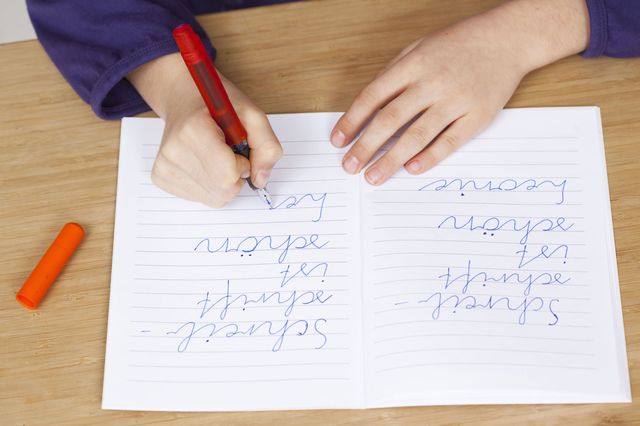Calligraphy enthusiasts, rejoice: Cursive is officially making a comeback. Arizona is to become the first state with foundational writing standards, making cursive a curriculum-sanctioned area of study in public schools.
According to the state's recently amended College and Career Ready Standards — a revision to the federal Common Core — Arizona classrooms are expected to teach cursive through the fifth grade. At the third grade level, students are expected to read and write cursive letters in both upper and lower cases.
Time to start practicing those tricky Zs.
"This is a proud day for Arizona," Diane Douglas, state Superintendent of Public Instruction, told CBS News. Cursive is but a small part of Douglas' curriculum overhaul — teachers, parents and anti-Common Core experts (education specialists that seek to change federal education guidelines) were all consulted on the rewrite that altered standards on language arts and mathematics by 48% and 40% respectively.
Including cursive in school education requirements has been the subject of debate for quite some time now. For a while there, we thought the curly script was a goner.
In a digital day and age, parents and policy makers are looking beyond cursive to scrutinize handwriting as a whole. Do we need to focus on a child's handwriting if the majority of their written communication will be done electronically via keyboard?
Virginia Berninger, a professor at the University of Washington, has published copious research on the subject; she told the Washington Post that it's a "myth" that handwriting, cursive included, is dead. "That's not what our research is showing," she said. "What we found was that children until about grade six were writing more words, writing faster and expressing more ideas if they could use handwriting — printing or cursive — than if they used the keyboard."
Arguments for keeping cursive in schools' curricula include opinions that the style gives kids a better understanding of how words work together, wrote the Post. Cursive's constant flow — only picking up a pen to move on to another word — is thought to help propel kids' ideas in ways that typing or plain old print can't.
Arizona isn't the only state to include cursive as a foundation to curriculum. North Carolina, Arkansas, Tennessee, California, Georgia and Kansas have all fought (and won) to reinvigorate the dying style in schools, reported the Independent Journal Review.
Looks like it's time we refresh our memories — at least enough to remember how to connect a cursive "o" to an "n." All the cool school kids are doing it.
[h/t CBS News]














